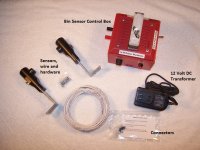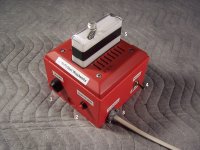Ken Harris
New member
bin sensor
bin sensor
I wonder if there are any bin sensors operating at 24 volts.My relay for the cyclone is a air conditioning relay with a 24 volt coil,what I would like to do is simply have bin sensor in series with coil and shut down relay for cyclone.
bin sensor
I wonder if there are any bin sensors operating at 24 volts.My relay for the cyclone is a air conditioning relay with a 24 volt coil,what I would like to do is simply have bin sensor in series with coil and shut down relay for cyclone.




